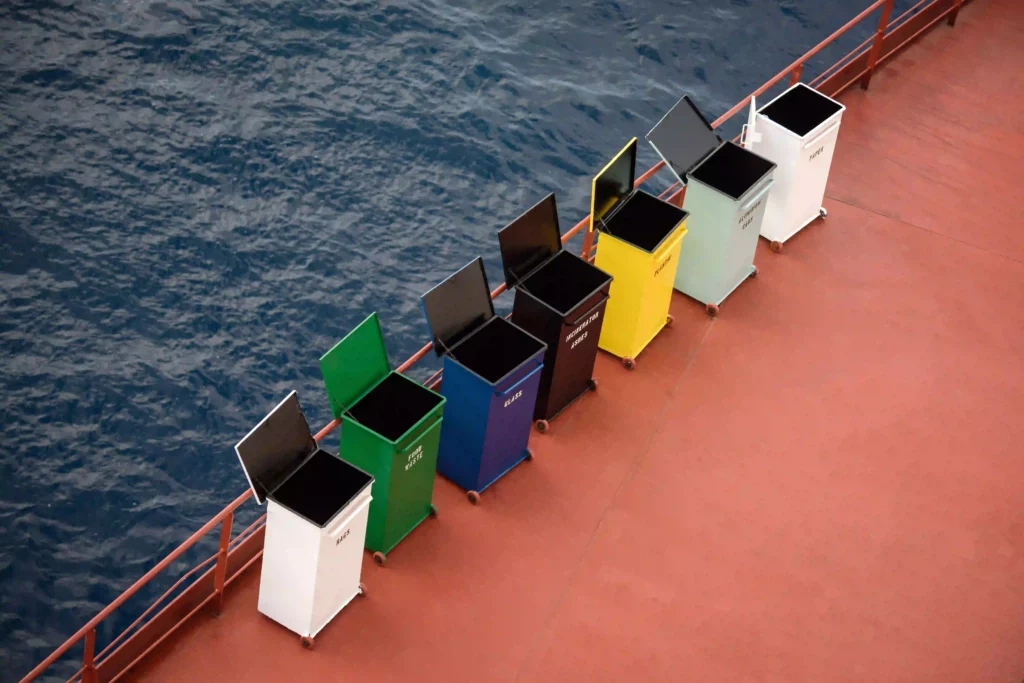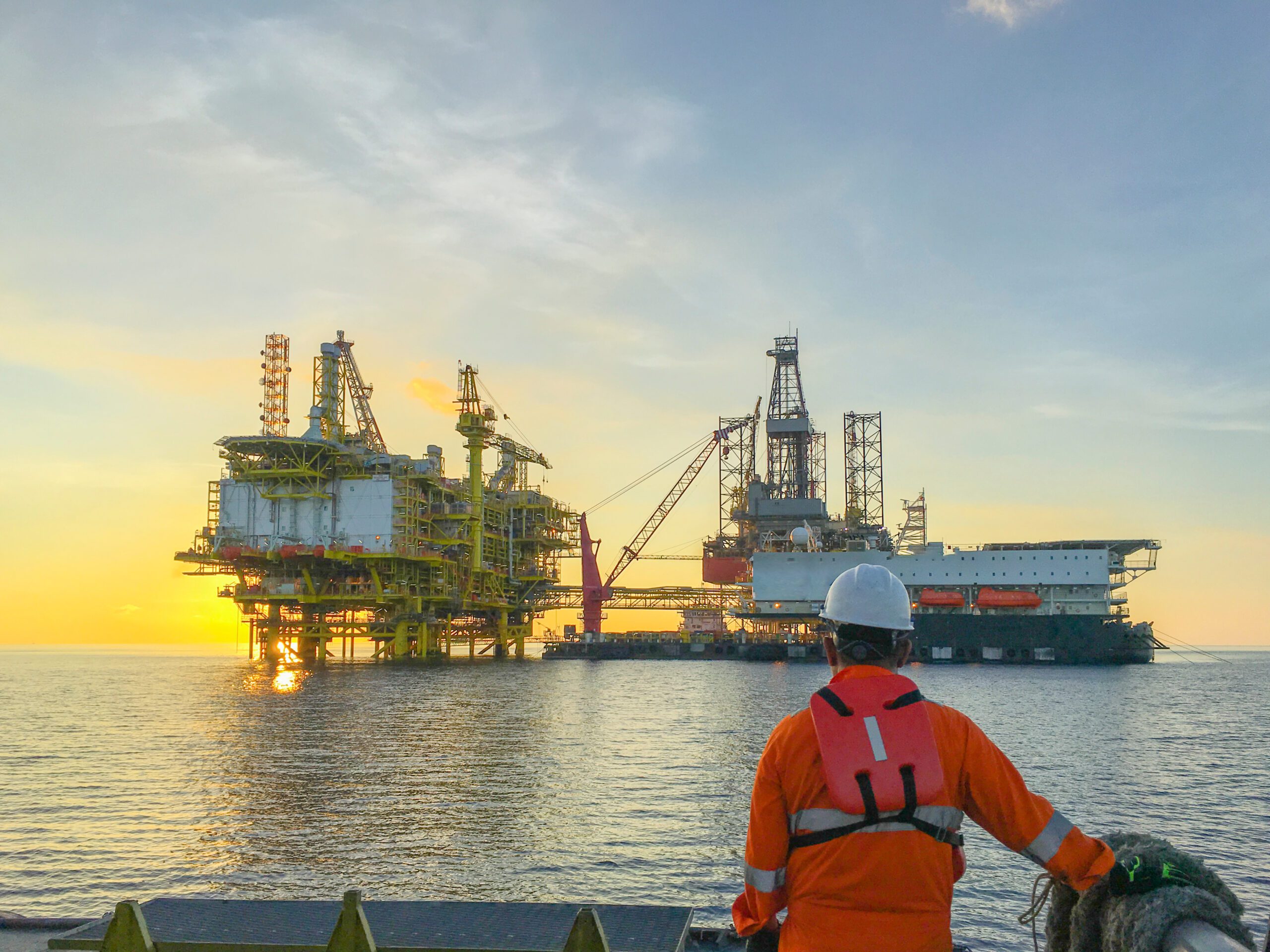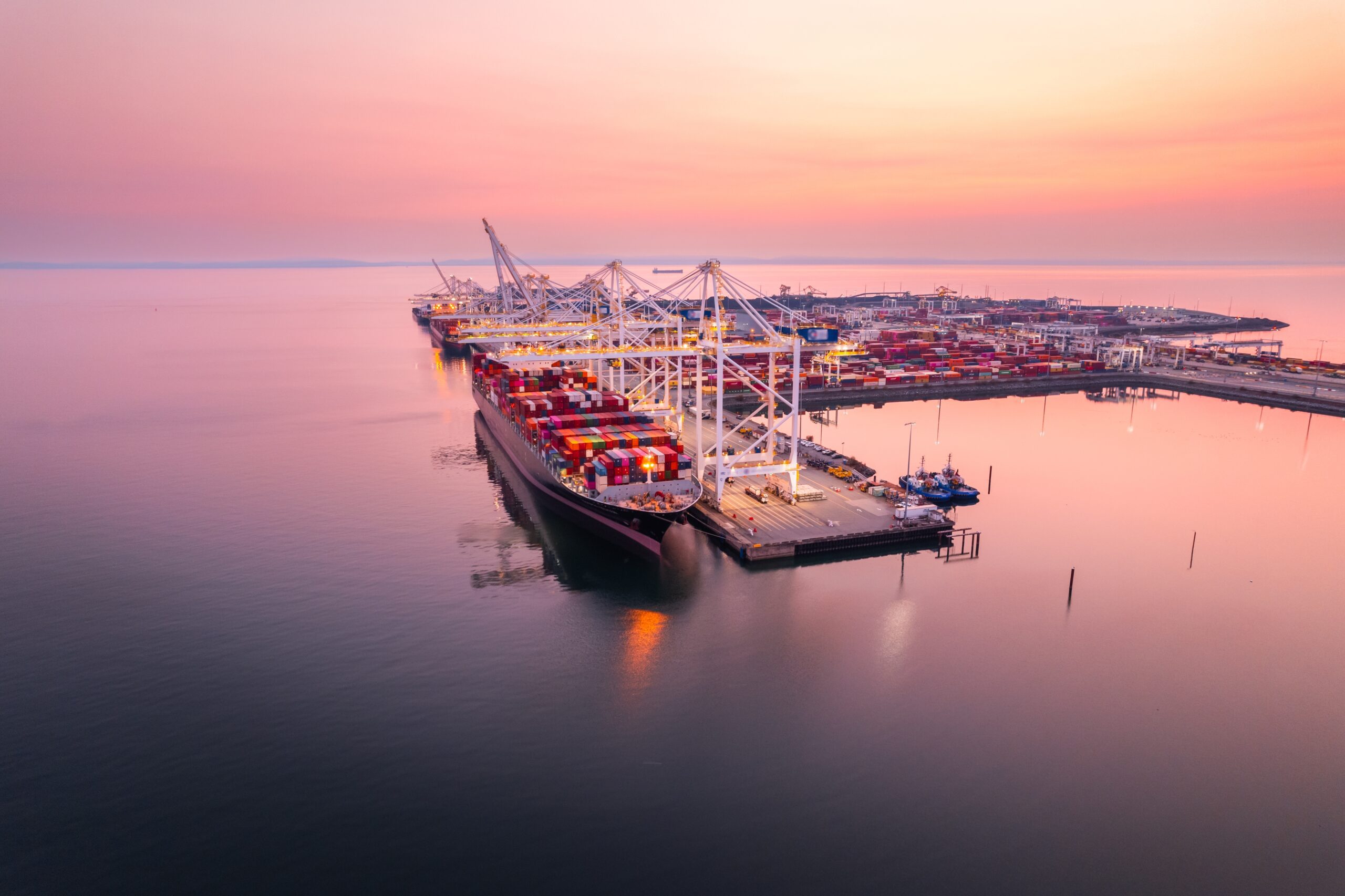Shipping by sea is without a doubt the most inexpensive method for companies to transport sizable amounts of goods. In fact, most international trade today is done by sea freight, with most statistics placing it at over 80% of total trade volume. On the other hand, maritime shipping is also the slowest method, with journeys requiring up to several weeks or even months for successful deliveries.
As we are all aware of, there are no self-driving, fully automated ships sailing the seas as of yet; vessels require crews of seafarers on these typically long voyages. And, just like in any other environment that a group of people inhabits for a period of time, there will be garbage produced in significant quantities.
Hence arises the topic we will approach in the current article. If you work in the marine industry or have an innate curiosity about it, you might wonder: what happens to the garbage generated onboard ships? What do the regulations state with regards to this matter? How does a vessel remain compliant and not pollute the environment?
The answers to these questions ultimately boil down to regulations and procedures, namely the MARPOL Annex V and its Garbage Management Plan (GMP). As such, we shall explore the regulations, what exactly the plan is and what the recommendations in place are.
What do the regulations say about garbage on vessels?
The regulation that is most relevant to our discussion is MARPOL Annex V, whose purpose is to reduce and ideally eliminate the waste discharged by vessels into global waters. As stated by the IMO, Annex V applies to all types of vessels, from merchant ships to non-commercial ones, unless specifically expressed otherwise. More than 150 countries are currently enrolled in MARPOL Annex V.
The regulation defines garbage on ships as most forms of waste, such as food, domestic and operational waste, excluding fresh fish or parts of fish which were generated as part of fishing or aquaculture activities undertaken during the journey. Virtually, everything you can think of on a vessel that is a byproduct of any consumption activity can be waste: plastic, cooking oil, cargo residues, etc.
The MARPOL Annex V contains 3 Chapters and 2 Appendixes, structured as follows:
Chapter 1: General
- Regulation 1: Definitions
- Regulation 2: Application
- Regulation 3: General prohibition on discharge of garbage into the sea
- Regulation 4: Discharge of garbage outside special areas
- Regulation 5: Special requirements for discharge of garbage from fixed or floating platforms
- Regulation 6: Discharge of garbage within special areas
- Regulation 7: Exceptions
- Regulation 8: Reception facilities
- Regulation 9: Port State control on operational requirements
- Regulation 10: Placards, garbage management, plans and garbage record-keeping
Chapter 2: Verification of Compliance with the Provisions of This Annex
- Regulation 11: Application
- Regulation 12: Verification of compliance
Chapter 3: International Code for Ships Operating in Polar Waters
- Regulation 13: Definitions
- Regulation 14: Application and requirements
Appendix I: Criteria for the Classification of Solid Bulk Cargoes as Harmful to the Marine Environment
Appendix II: Form of Garbage Record Book
The way in which the regulatory requirement achieves its aim is through:
- imposing conditions and limits for the discharge of waste into the sea, which are specified in Regulations 3, 4, 5, 6, 7 and 14
- mandating the integration of a Garbage Management Plan, for ships that meet the specified criteria, through Regulation 10
The criteria from Regulation 10 is the following:
“Every ship of 100 gross tonnage and above, and every ship which is certified to carry 15 or more persons, and fixed or floating platforms shall carry a garbage management plan which the crew shall follow. This plan shall provide written procedures for minimizing, collecting, storing, processing and disposing of garbage, including the use of the equipment on board. It shall also designate the person or persons in charge of carrying out the plan. Such a plan shall be based on the guidelines developed by the Organization and written in the working language of the crew.”
What is a Garbage Management Plan?
As we can infer from the statements above, the Garbage Management Plan of vessels, also known as a shipboard garbage management plan, is a structured approach to managing waste generated on ships with the purpose of minimizing environmental impact while complying with international regulations.
Most seagoing vessels meet the criteria of 100 gross tonnage and crew of minimum 15 seafarers, so the proper implementation of this plan is of utmost importance for most ship owners and managers who wish to stay compliant and avoid penalties.
If you’re wondering how a GMP should be developed and what it needs to encompass, Resolutions MEPC.220(63) from 2012 and MEPC.295(71) from 2017 provide all the necessary information to guide its establishment.
Key takeaways one should consider when developing a Garbage Management Plan:
- MARPOL Annex V aims to protect the marine environment by regulating how ships manage their garbage, including plastics, food waste and other waste materials generated during voyages.
- Shipowners or managers must create a Garbage Management Plan for each vessel (that meets the criteria specified in Regulation 10) they operate. This plan should outline procedures for collecting, storing and disposing of garbage while at sea and in port.
- The GMP should specify different categories of garbage, such as plastics, food waste, domestic waste, operational waste and cargo residues. Each type of garbage requires specific handling procedures.
- Annex V prohibits the disposal of certain types of garbage at sea, such as plastics, except under specific circumstances. Other materials like food waste can be disposed of under certain conditions, including being far from shore and following proper shredding procedures.
- Shipowners or managers must keep accurate records of all garbage disposal operations, including the type and quantity of garbage discharged, the time and location of disposal, and any exceptional circumstances.
- Crew members should be trained on the Garbage Management Plan and be aware of their responsibilities for proper garbage handling. Regular training sessions will help ensure compliance with Annex V requirements.
- Shipowners or managers should utilize port reception facilities whenever possible to offload garbage for proper disposal on land. Adequate facilities are usually available in ports to handle various types of ship-generated waste.
- Authorities conduct regular inspections to ensure compliance with Annex V requirements. Non-compliance can result in penalties, fines or other legal consequences.
- Shipowners or managers should regularly review and update their Garbage Management Plans to incorporate lessons learned, technological advancements, and changes in regulations.
- Adhering to Annex V regulations not only ensures compliance with international laws but also demonstrates a determination to protect the marine environment for future generations.
Mr. Marine is your Global Beacon
If the electromechanical equipment on your vessels ever needs testing, inspection, calibration or certification services, do not hesitate to contact us. Together, we can devise a plan that is suited to your individual needs and the marine equipment onboard your ships will be safe and compliant in no time. We are available 24/7, anywhere in the world.
Disclaimer
The information provided is for general informational purposes only and should not be interpreted as professional advice. Readers are encouraged to conduct further research and consult with relevant experts before making any decisions or taking any actions based on the content of this article. While every effort has been made to ensure the accuracy and reliability of the information presented, no guarantee is made regarding its completeness, timeliness or suitability for any particular purpose. The author assumes no responsibility or liability for any errors or omissions in the content of this article.
Sources:
https://www.imo.org/en/ourwork/environment/pages/garbage-default.aspx
http://www.marpoltraining.com/MMSKOREAN/MARPOL/Annex_V/index.htm
https://imorules.com/MARPOL_ANNV_CH1.html
https://www.bahamasmaritime.com/wp-content/uploads/2022/03/MN060-MARPOL-Annex-V-v1.0.pdf









